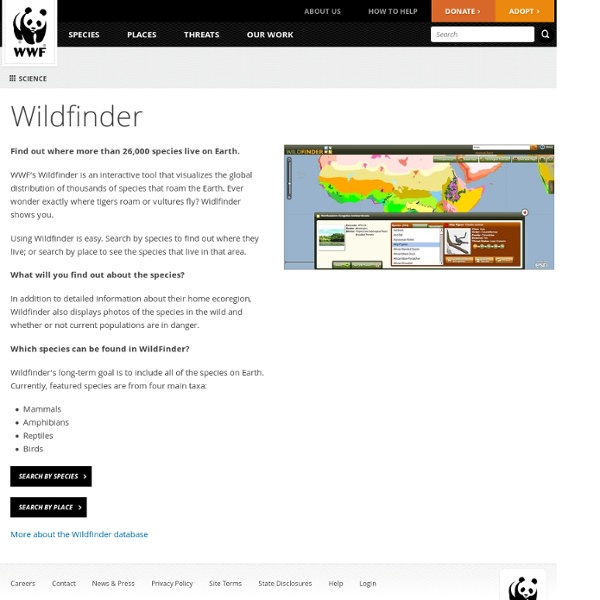Mon herbier virtuel - Les plantes scannées
Mon herbier virtuel - numérique Mon herbier virtuel, encore appelé numérique est réalisé avec un scanner (numériseur en Français !) : les plantes sont posées directement sur la vitre. Je fais le noir le plus complet possible dans la pièce où se trouve le scanner et laisse son couvercle ouvert. Il est possible d'augmenter l'échelle du scanner en choisissant par exemple 200% au lieu de 100. Toutes les pages sur les plantes à fleurs dans le menu botanique ci-dessous | Lien externe présentant des sites sur la flore Recherche auteur, lieu et date de ces photos du début 20eÉnigmes et quizz | Éducation | Botanique | Écologie | Environnement | Étymologie | Paysages | Géologie | Histoire des Sciences | Humour | Illusion et relief | Nature | Orne (département) | Zoologie et Biologie | Informatique | Autres disciplines Accueil | Rechercher dans le site | Menu général - accès à toutes les pages | log Sciences et paysages, chercher sur ce Blog Forum Sciences et paysages (Bernard Langellier) - 00035345 -
Games@NOAA
Parchi del Ducato | Parco Fluviale del Trebbia | Centri Visita e Uffici Operativi
Il Parco Fluviale del Trebbia, ultimo nato tra i Parchi Regionali dell'Emilia-Romagna si sta dotando, grazie al programma Investimenti regionale dedicato ai nuovi Parchi, di Centri Visita e Spazi espositivi/museali diffusi. L'Ufficio Operativo del Parco L'ufficio dove contattare il personale, nonché trovare informazioni di carattere turistico e naturalistico, è ubicato presso il PALAZZO DELLA PROVINCIA di PIACENZA:Indirizzo: Corso Garibaldi, 50 - LUNEDI' - MERCOLEDI' - VENERDI' dalle 9 alle 13, - MARTEDI' e GIOVEDI' - dalle 9 alle 13 e dalle 14 alle 17.30 Centro Visite di Borgo Trebbia. Un centro visita è in allestimento presso un edificio ubicato in Località Borgo Trebbia, a fianco della Chiesa di Camposanto Vecchio. Il centro visite di Borgo Trebbia avrà per tema il VOLO, inteso sia come spazio areo sia come spostamento e, dunque viaggio.
Le Web de l'Ornithologie
Antarctic
Plants The Antarctic mainland is relatively poor in plant life, and the species that occur there have to survive extreme conditions on the very few ice-free pieces of land. There are no trees or shrubs in the Antarctic, and only two flowering plant species, the Antarctic hair grass (Deschampsia antarctica) and the Antarctic pearlwort (Colobanthus quitensis), which grow on the Antarctic Peninsula and some Antarctic islands (1) (3). Most of the terrestrial plant life of the Antarctic consists of lower plant groups, such as mosses, liverworts and lichens. Lichens and some mosses can be found growing even on windswept, dry rock surfaces, and are well adapted to survive the harsh climate (1) (2) (3). A number of fungi species are also found in the Antarctic (1) (3). Although poor in higher plants, the Antarctic does support single-celled algae, which grow both on land and in the ocean, where they contribute to the ‘phytoplankton’ that are an important part of the marine food chain (1). Mammals
Parchi del Ducato | Parco dello Stirone e del Piacenziano
Il Parco, nel suo attuale assetto, è nato alla fine del 2011, dall'unione tra il Parco Regionale Fluviale dello Stirone e la Riserva Naturale Geologica del Piacenziano. L'Area Stirone si trova tra le province di Parma e Piacenza, nei comuni di Fidenza (PR), Salsomaggiore Terme (PR), Alseno (PC) e Vernasca (PC), e si sviluppa ai lati del torrente, con un’ampiezza media di circa 1 Km, dalla località La Villa, a monte, fino al ponte sulla via Emilia, a Fidenza.L'Area Piacenziano si sviluppa tutta in territorio Piacentino e tutela le nove stazioni dell'Ex Riserva, fisicamente separate tra loro, distribuite in cinque diverse vallate, e ricadenti nei Comuni di Castell'Arquato, Lugagnano Val d'Arda, Vernasca, Gropparello e Carpaneto Piacentino. Dal 2012 è gestito dall’Ente di Gestione per i Parchi e la Biodiversità – Emilia Occidentale.
Les oiseaux
ARKive - Discover the world's most endangered species
Wildscreen's Arkive project was launched in 2003 and grew to become the world's biggest encyclopaedia of life on Earth. With the help of over 7,000 of the world’s best wildlife filmmakers and photographers, conservationists and scientists, Arkive.org featured multi-media fact-files for more than 16,000 endangered species. Freely accessible to everyone, over half a million people every month, from over 200 countries, used Arkive to learn and discover the wonders of the natural world. Since 2013 Wildscreen was unable to raise sufficient funds from trusts, foundations, corporates and individual donors to support the year-round costs of keeping Arkive online. Therefore, the charity had been using its reserves to keep the project online and was unable to fund any dedicated staff to maintain Arkive, let alone future-proof it, for over half a decade. Despite appeals for support, just 85 of our 5.6 million users in 2018 made a donation.
Camera Lucida - Missions Printemps
Missions Printemps est la plus grande enquête de sciences participatives sur le printemps 2012. 12 missions à réaliser pour aider les scientifiques à comprendre les effets du changement sur la flore et la faune. L'opération s'est déroulée entre février et juin 2012 sur le site d'ARTE en collaboration avec le CNRS et Universcience. Du 28/02/2012 au 01/05/2012 Pour cette première mission, rendez-vous sous terre ! Participez à la nouvelle cartographie des vers de terre en France en les identifiant dans votre jardin, la pelouse, le champ ou la forêt les plus proches ! Découvrir les vers de terre au printemps. Urbanisation en hausse, agriculture intensive, usage de pesticides, réchauffement climatique... Le grand recensement des vers de terre : Une seule carte de la répartition des vers de terre a été réalisée à ce jour dans l’histoire de France. Les conditions idéales de la mission « vers de terre » : Météo : température entre 6 et 10°C. Le référent scientifique de la mission: Daniel Cluzeau :



